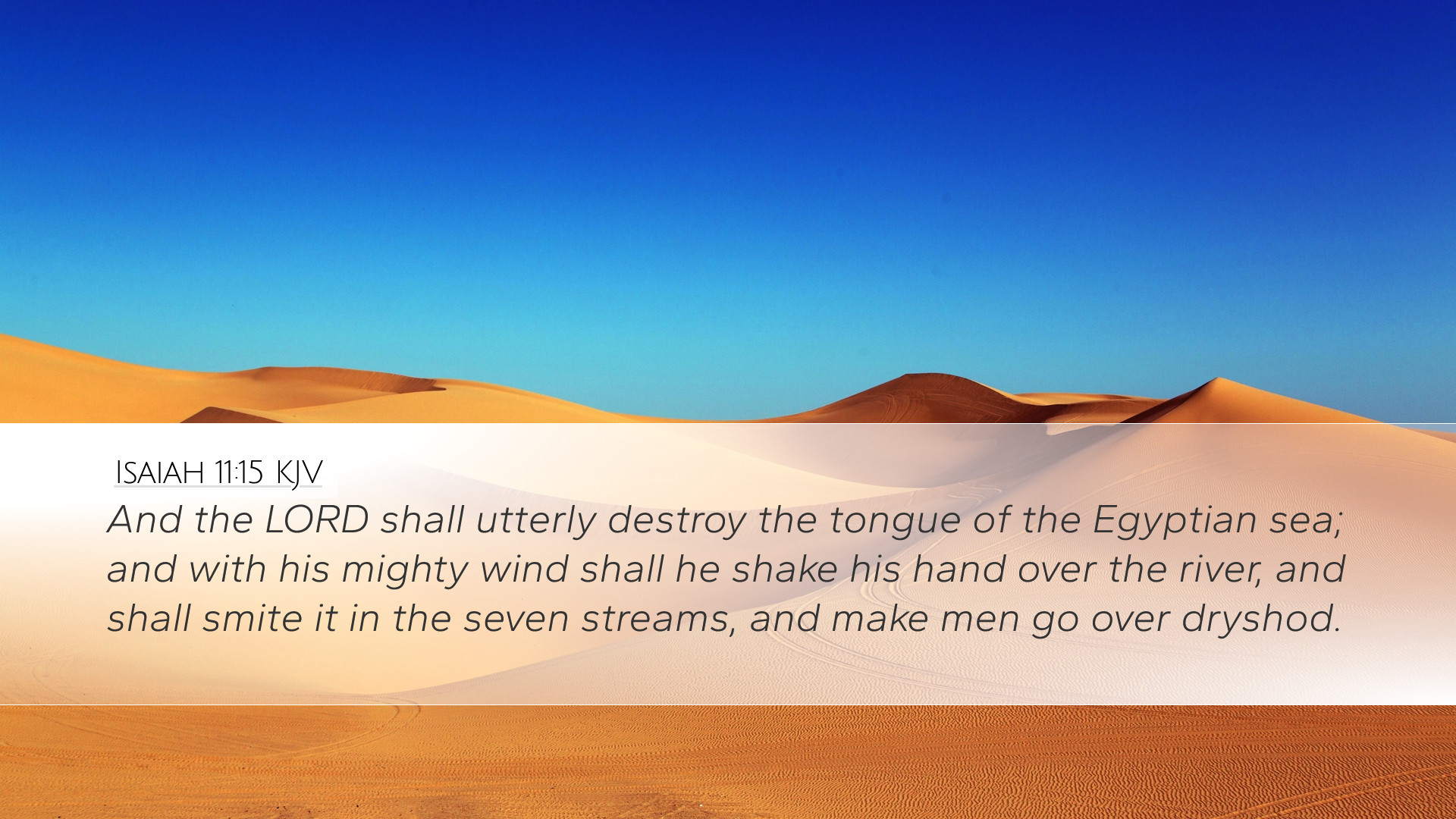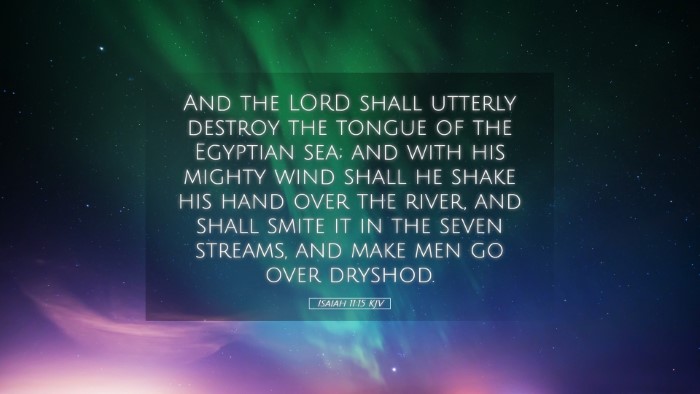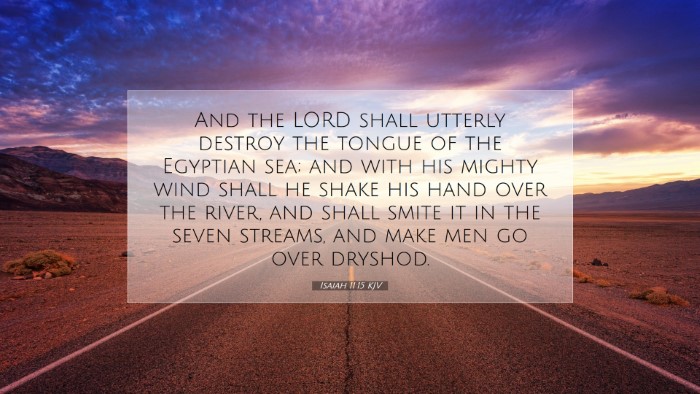Commentary on Isaiah 11:15
Text of Isaiah 11:15 (ESV): "The Lord will utterly destroy the tongue of the Sea of Egypt, and will wave his hand over the River with his scorching breath, and strike it into seven channels, and he will lead people across in sandals."
Introduction
Isaiah 11:15 is a prophetic declaration that illustrates God's sovereignty over nature and His power to deliver His people. In this verse, the imagery evokes the idea of divine intervention which, particularly in the context of Israel's history, resonates deeply with themes of liberation, restoration, and the promise of the coming Messiah. This commentary explores multiple dimensions of the verse, pulling insights from renowned public domain commentaries.
Exegesis of the Verse
This passage encompasses remarkable symbolism and offers a profound understanding of God’s redemptive plan.
- Destruction of the Egyptian Sea:
Matthew Henry notes that the term "the tongue of the Sea of Egypt" symbolizes the mighty waters that God controls. This imagery likely refers to the Red Sea, which holds historical significance in the Exodus narrative. In God’s victory over Egypt, He demonstrates His ultimate power over nations and their gods.
- God's Sovereign Power:
Albert Barnes emphasizes the aspects of God’s sovereignty as He commands and orchestrates the natural elements. The act of waving His hand brings forth a picture of divine authority, reminding us that creation answers to its Creator. The reference to God's "scorching breath" serves as a metaphor for His capacity to direct and shape the course of history according to His will.
- The Division of the River:
Adam Clarke elaborates on the striking of the River into seven channels, a powerful image of divine intervention. This division is not merely geographical but symbolizes God's provision for His people, enabling them to cross safely. Clarke compares this to various instances in scripture where God provided paths through water, underscoring the theme of salvation and deliverance.
Thematic Elements
Isaiah 11:15 stands at the intersection of several key theological themes:
- Divine Deliverance:
This verse is a foretaste of the liberation God offers, reminiscent of the Exodus. It reminds believers that God’s intervention often comes in times of need, providing pathways where none seem to exist.
- Messianic Prophecy:
In the context of the greater passage, this verse outlines the nature of the coming Messiah through the lens of salvation. The prophetic vision points ultimately toward Christ, who is the fulfillment of God's promise to deliver His people not just from physical bondage, but from sin and spiritual death.
- Hope and Restoration:
Isaiah’s message often includes themes of hope and restoration. This specific verse provides assurance that, despite present troubles, God’s hand is poised to deliver and restore His people.
Applications for Contemporary Readers
For pastors, students, and scholars, Isaiah 11:15 encourages a deeper reflection on God's character and His ongoing work in the world. The following applications are drawn from the insights of these commentaries:
- Trust in God's Sovereignty:
This passage serves as a reminder to place trust in God's absolute power. With the confidence that God preserves and protects, readers are encouraged to hold firmly to the belief that no situation is beyond His control.
- Recognizing God's Provision:
Believers are called to acknowledge that God provides paths through difficulties. Reflecting on how the Israelites crossed the divided waters, students of Scripture are invited to consider how God has made a way through their own tumultuous circumstances.
- Anticipating Fulfillment:
This verse directs attention to God's promises and their ultimate fulfillment in Christ. Understanding the prophetic layers within Isaiah enriches worship and encourages an expectant heart towards the returning Savior.
Conclusion
Isaiah 11:15 serves as a critical reminder of God’s majestic power alongside His intimate care for His people. Drawing from classic commentaries reveals the multifaceted dimensions of this prophetic declaration, providing a source of encouragement and insight for all who engage with the Word of God. In dealing with contemporary concerns, the essence of God's promise in this verse remains a steadfast truth for faith communities seeking divine guidance and reassurance.


